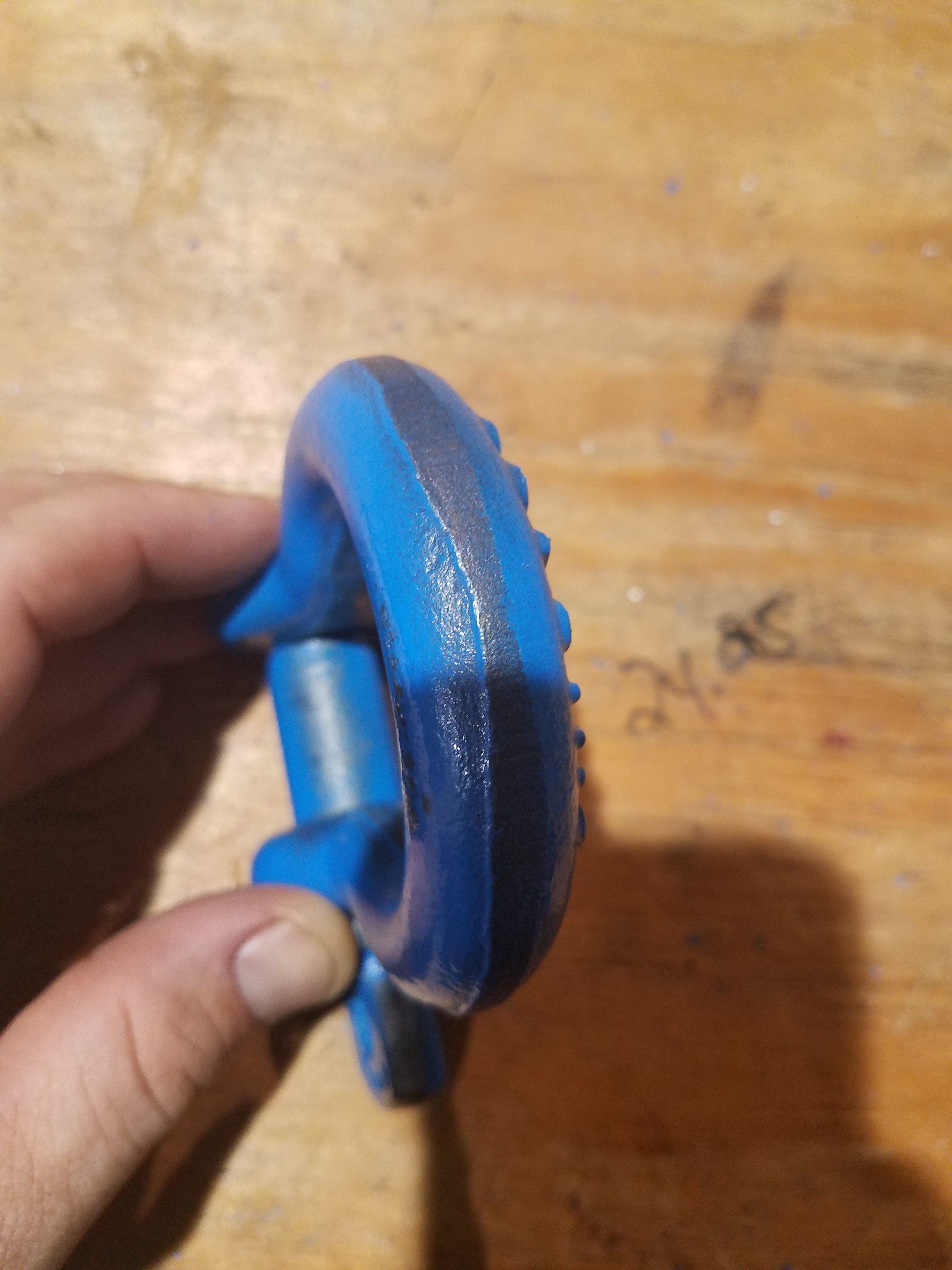so few questions here:
1. shackles, steel,
wire rope, motors, hooks, chain,
etc. paint or not?
2. surface rust ... ie outside show covered or not stuff gets wet how do you remove?
3. if you do either of the two when ... during regular inspection or after each use/tour
etc?
I'll be interested in the answers then share what we do.
thanks
I'd echo just about everybody else here (aside from the walnut idea...haven't tried that before...). But, if it helps anyone else:
1) Paint: I paint NOTHING that doesn't come powder-coated already from the manufacturer. Overkill? Maybe. I'm not taking a chance that, as has been mentioned above, any paint job I do might mask stress fractures, previous rust spots, or
etc. that would otherwise make it unsafe to use. If I
HAVE to color code something (like
wire rope slings,
etc.) I use
E-tape or
friction tape on some part that's non-contacting in a load situation.
2) Rust: For me, though, rust is a devil not to be trusted. I don't do a lot of outdoor gigs, however, so I can't really speak to that. But if I find rust that I can't rub off with my fingers (or
MAYBE a light wipe with some simple green on non-lubricated parts), I take it out of service and either a) replace it permanently, or b) inspect it closer back at the shop to see if it's eroded enough to become a danger later on. If I even suspect that it is, I take it out of service for any over-head or load-bearing functions (I might then paint it and, say, use it as a bike lock,
etc....). If i was doing a lot of rigging outside, I'd either use stainless steel parts or talk to manufacturers and get there advice.
3) Inspection: Before every use. Period. Obviously. If something doesn't look right, it's taken out of service until we can determine if it's safe to use. If we suspect it's not, we don't put it back in service. Anything taken out of service on suspicion is tagged, anything determined to be unsafe (like frayed cable,
etc.) is cut right there.
jake







